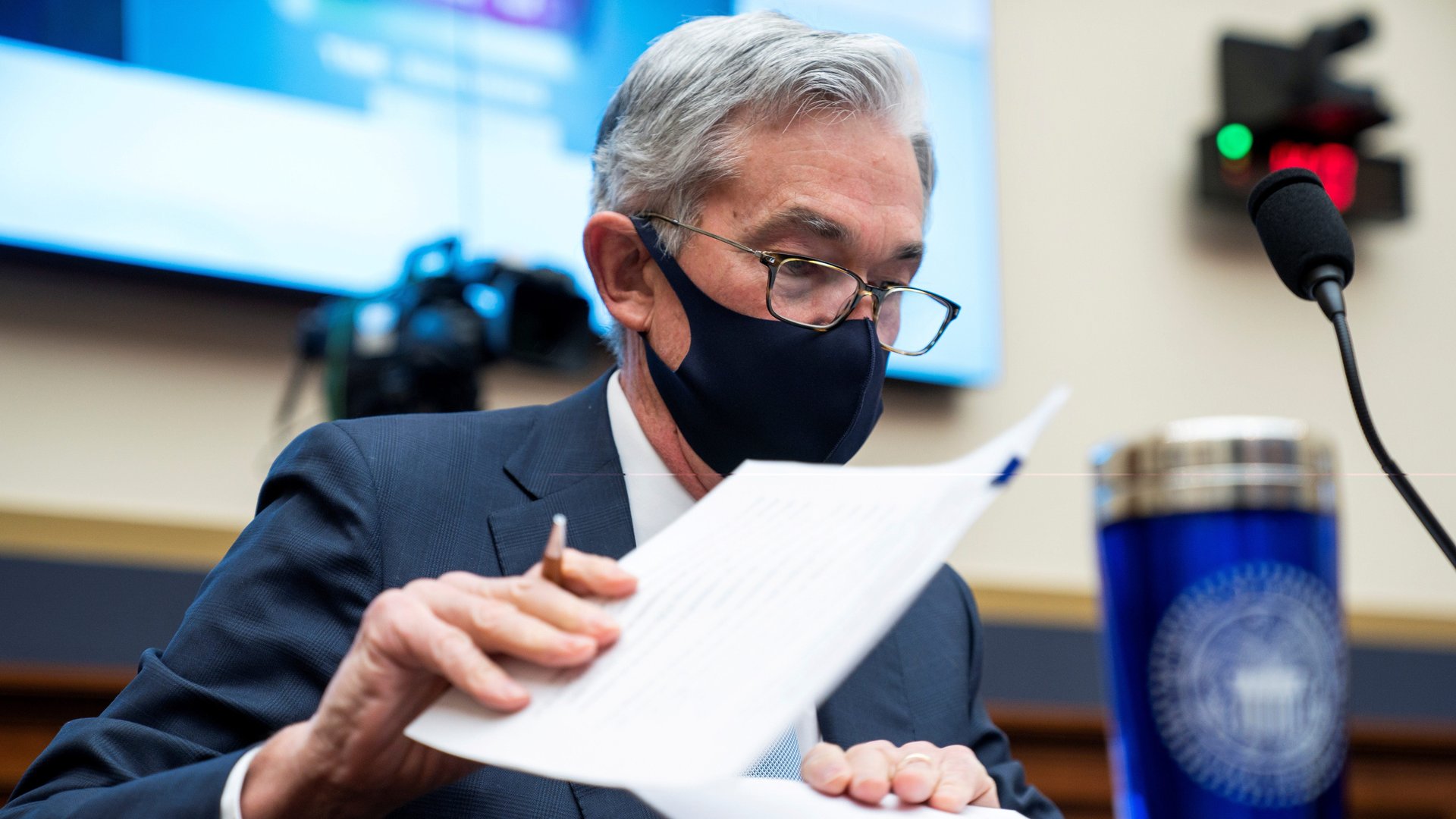The Fed is on a collision course with the $20 trillion Treasury market
The $20 trillion Treasury bond market is getting jittery. The question is what is the Federal Reserve going to do about it?


The $20 trillion Treasury bond market is getting jittery. The question is what is the Federal Reserve going to do about it?
As vaccines get jabbed into arms and Congress prepares to dish out another $1.9 trillion of support for the economy, investors are starting to fret about inflation. That has sparked a selloff in government debt that is driving up interest rates: 10-year Treasury bonds yields touched 1.6% yesterday, the highest rate in a year, and yields on five-year notes, seen as more sensitive to changes in monetary policy, had one of the biggest jumps in a decade. The US Treasury’s auctions of five- and seven-year securities were poorly received by investors.
The bond tantrum is spilling into other markets, with stocks of high-flyers like exercise bike company Peloton and electronic signature firm DocuSign dropping about 6% yesterday, pushing the tech-focused Nasdaq 100 index to its biggest daily loss since October. Those companies have been major beneficiaries of Fed policy to keep interest rates low, and rising expectations for economic growth and inflation could force the central bank to reduce some of its support. Higher bond yields also make stocks less attractive, as owning shares of companies becomes comparatively less worth the risk. In a sign of how that paradigm is shifting, the risk-free 10-year Treasury bond now yields more than the dividends of the S&P 500 index of large US stocks.
How will the Fed respond to the tantrum in bond markets?
Strategists think the Fed is likely to step up its efforts to keep Treasury yields contained. Kit Juckes of Société Générale wrote today in a research note that the jump in bond yields, particularly those maturing in around five years, is “unsustainable.” Sebastien Galy, senior macro strategist at Nordea Asset Management, expects the US central bank to respond quickly, potentially this weekend, perhaps by buying longer-maturity securities to clamp down on rising yields. He expects bond investors to test the Fed’s resolve even more in the second half of the year as the economy heats up.
Indeed, interest rates are rising around the globe, and central bankers are already warning any would-be bond vigilantes: Isabel Schnabel, executive board member of the European Central Bank, said policy makers could have to boost monetary support if rising bond yields damage the economic recovery. The governor of the Bank of Japan also “fired a warning shot against higher yields,” Galy said.
Alberto Gallo, head of macro strategies at asset management company Algebris Investments, thinks investors had become complacent about the prospects of rising bond yields, and that US inflation will climb to 3% this year—well above the Fed’s 2% goal. Despite the threat of higher prices for goods and services, he expects the Fed and others to respond quickly to keep a lid on interest rates. “Central banks are likely to push back,” he said.